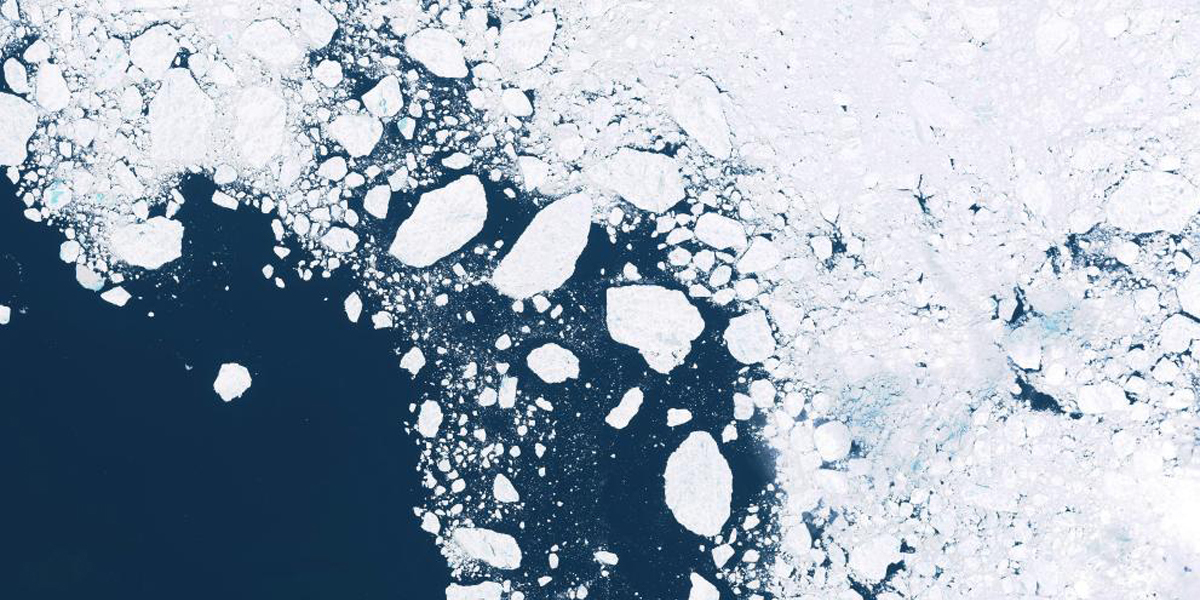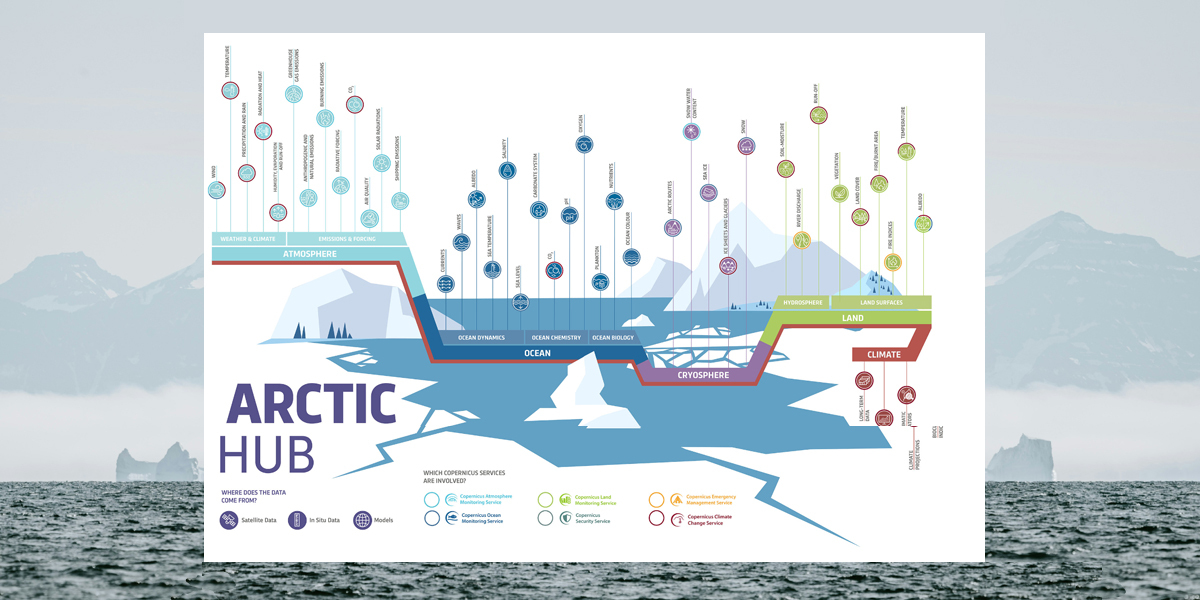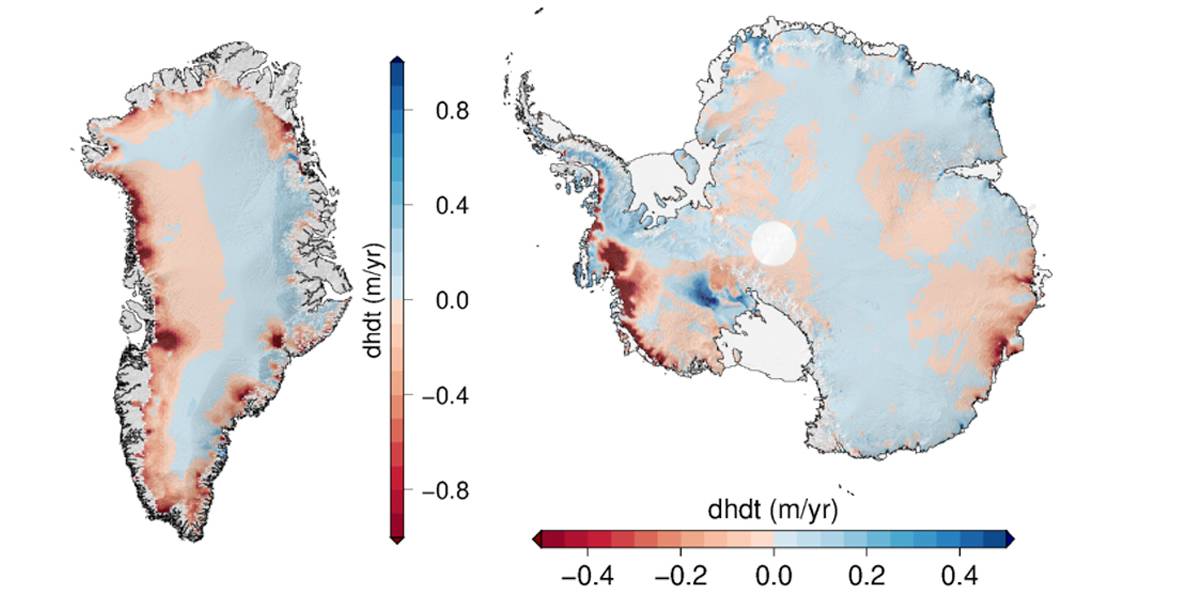New roadmap to help the EU Space Programme better monitor polar regions

The EU Polar Task Force recently presented its Copernicus Polar Roadmap - a strategic plan for the evolution of Earth observation in the Polar Regions over the next five to ten years.
The roadmap outlines the steps needed to ensure that the EU Copernicus Earth observation services continue to develop and adapt to the rapidly changing needs of the Polar Regions. In particular, the roadmap calls for the creation of a Polar Hub to ensure that EU satellites and other observation systems deliver tailor-made data for the Arctic and Antarctic regions.
Polar Regions: critical for environment and geo-politics
Arctic regions, which are of immense global significance, are experiencing unprecedented changes. Warming at a rate about four times faster than the global average, the Arctic is increasingly a focal point for climate-related challenges.
The region’s melting ice, thawing permafrost, and rapidly shifting ecosystems have far-reaching implications for global security, energy supplies, transportation and environmental sustainability.
Earth observation technologies, particularly those provided by Copernicus (the Earth Observation component of the EU space programme), have become essential for the development and implementation of policies that address these complex challenges.
See full version of the infographic below on the arctic hub website

The EU’s commitment to Polar Regions
Copernicus is a central element of the EU polar strategy, using satellites and other tools to help monitor and understand the rapid changes occurring in Arctic regions.
Over the past few years, the European Commission has worked closely with various stakeholders to understand better the needs of the user communities in Polar Regions. These efforts helped create a Copernicus polar observing system that combines satellite data, ground measurements and advanced computer modelling systems. This system helps policymakers, scientists, and local communities make better decisions based on accurate and timely information.
However, the situation in the Polar Regions is changing at a fast pace. To address this challenge, a Polar Task Force composed of high-level experts was set up in 2022. This Task Force ensures that the EU’s polar observation capabilities delivered by Copernicus continue to evolve and adapt to new realities.
The future of polar observation
The new roadmap drawn up by the Polar Task Force identifies areas for improvement in polar observation to guarantee that Copernicus continues to provide tailored data to effectively monitor developments in the polar regions.
Key recommendations of the roadmap are:
• Creation of a Polar Thematic Hub
Copernicus data feed into four Thematic Hubs, which are single entry points to Copernicus data. These Hubs provide information and analyses of different policy areas, including Arctic, health, energy, and coastal observations.
The roadmap emphasises the need to strengthen and interconnect the four Copernicus Thematic Hubs. In particular, the Arctic Hub needs to be expanded into a Polar Hub that covers both the Arctic and Antarctica. Strengthening the hubs and creating a dedicated Polar hub will help the EU more effectively implement its Arctic policy and address the broader environmental and geopolitical challenges linked to polar regions.
• New and enhanced Copernicus products
It is crucial to develop new Earth observation products (related to the condition of sea ice, ice sheets and glaciers) and improve the accuracy of existing ones to better tailor Copernicus data to polar science and policy. Recommendations include continuing scientific research on polar processes and close cooperation with similar research activities like the ESA Climate Change Initiative and Horizon research projects. This can help further develop new and improved processing algorithms, advanced data assimilation techniques and forecasting skills.
Such new features are critical to monitoring issues such as permafrost thawing, a process that can lead to severe damage to infrastructure, with knock-on effects for the environment. If we can better track these changes, we can mitigate their impacts, protecting both the environment and the communities at risk.
• More accurate and timely data
Precise and timely data for sea-ice melt, glacier conditions, and snow levels are vital to understand the rapid environmental changes occurring in Arctic and Antarctic regions. Funding issues and the remoteness of the Polar Regions make it much more difficult to properly calibrate satellite data with ground measurements.
The roadmap outlines practical steps to overcome these challenges, such as standardising data and strengthening cooperation through international organisations and scientific platforms. Such improvements will allow local communities and policymakers to respond more effectively to these changes, which have significant implications for the global climate and for local ecosystems.

Polar observations: key for the future
The roadmap will shape the future of how we monitor and protect the Polar Regions. Its successful implementation will directly influence our ability to safeguard the Polar Regions and, by extension, the global climate and ecosystems.
This is especially important for policymakers, scientists, and local and indigenous communities. As the pressure on these regions increases, the EU’s commitment to using advanced Earth observation technologies will be crucial to safeguarding our planet’s future.
Related links
Story Source: European Commission Joint Research Centre
Subscribe to our newsletter
Stay updated on the latest technology, innovation product arrivals and exciting offers to your inbox.
Newsletter

